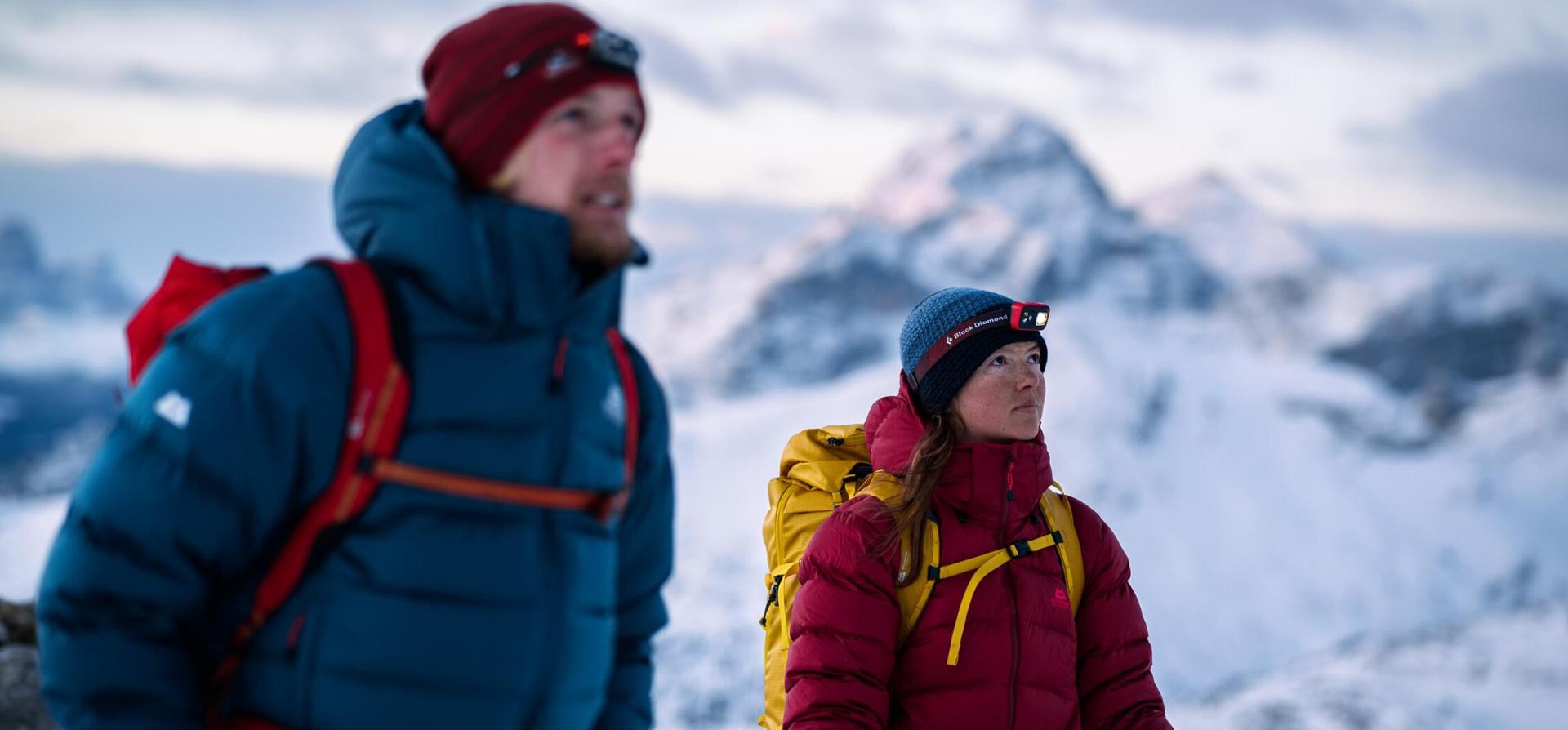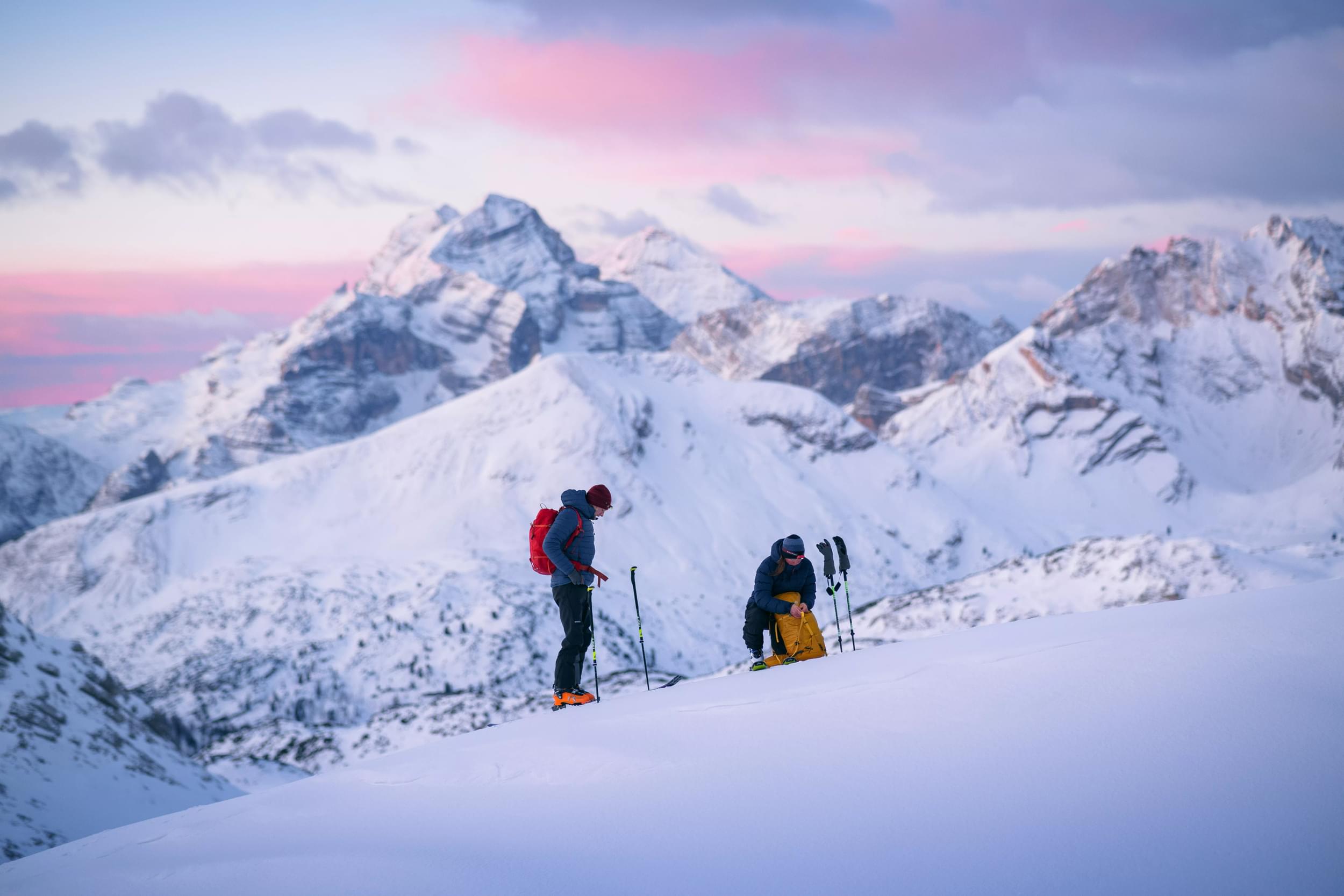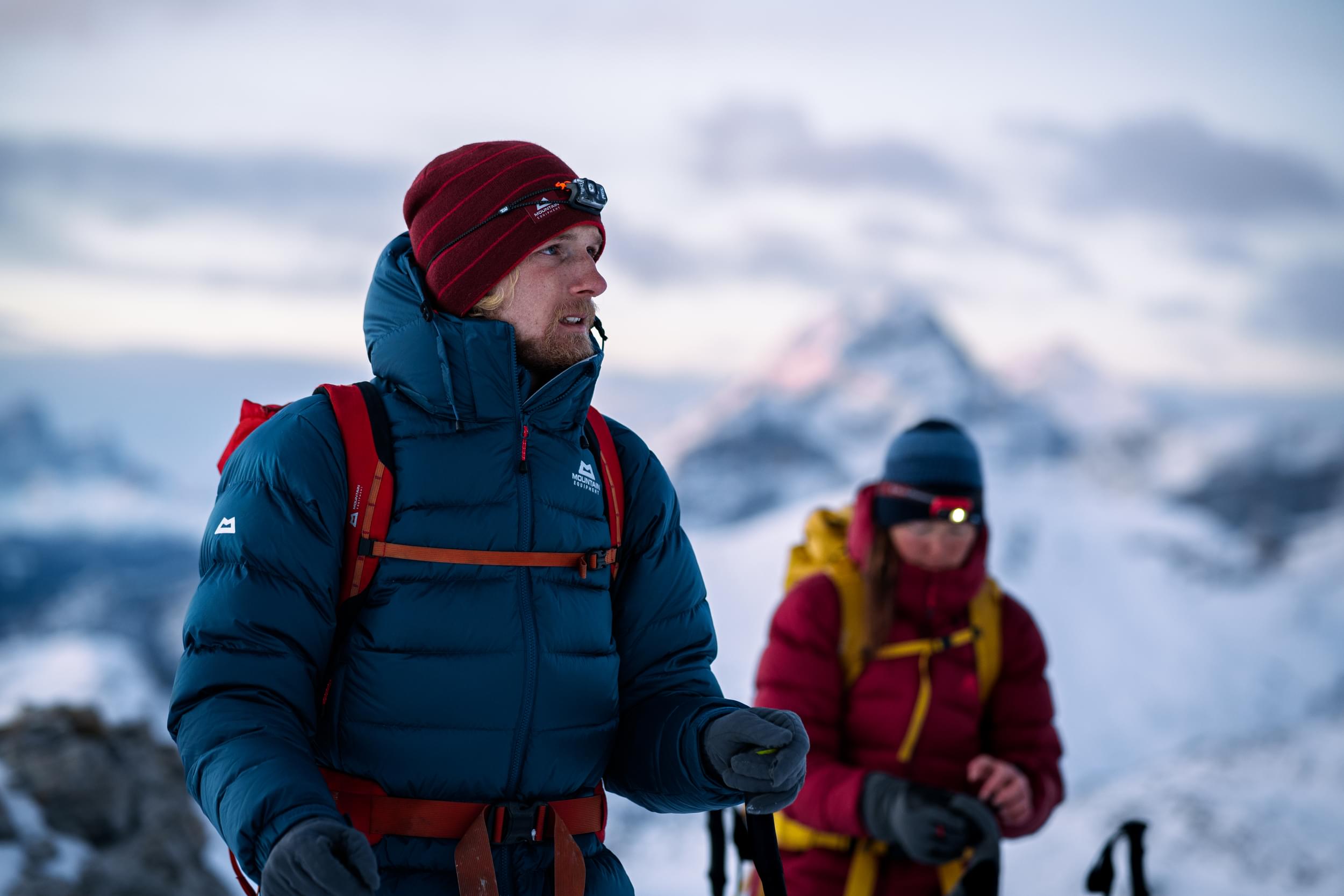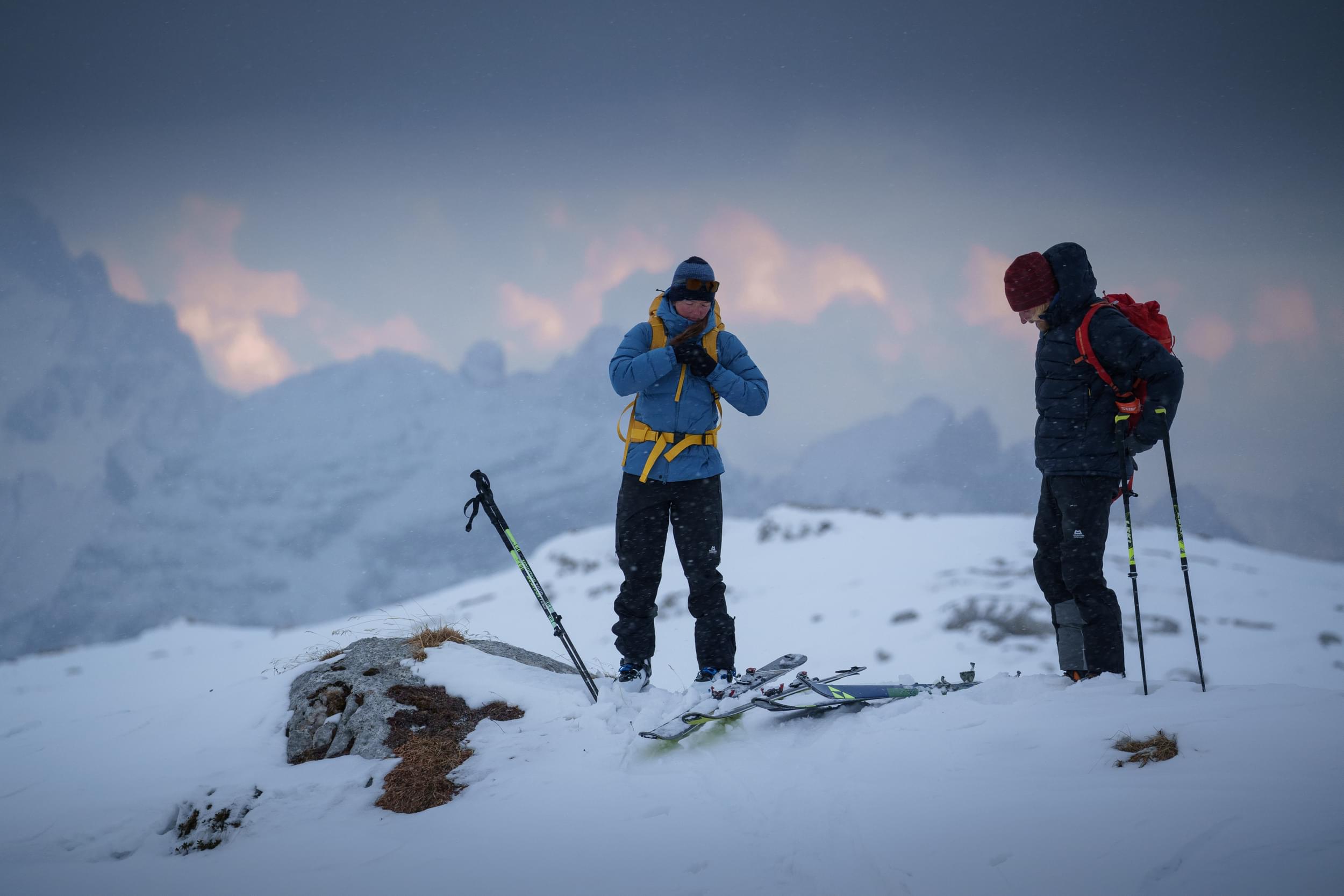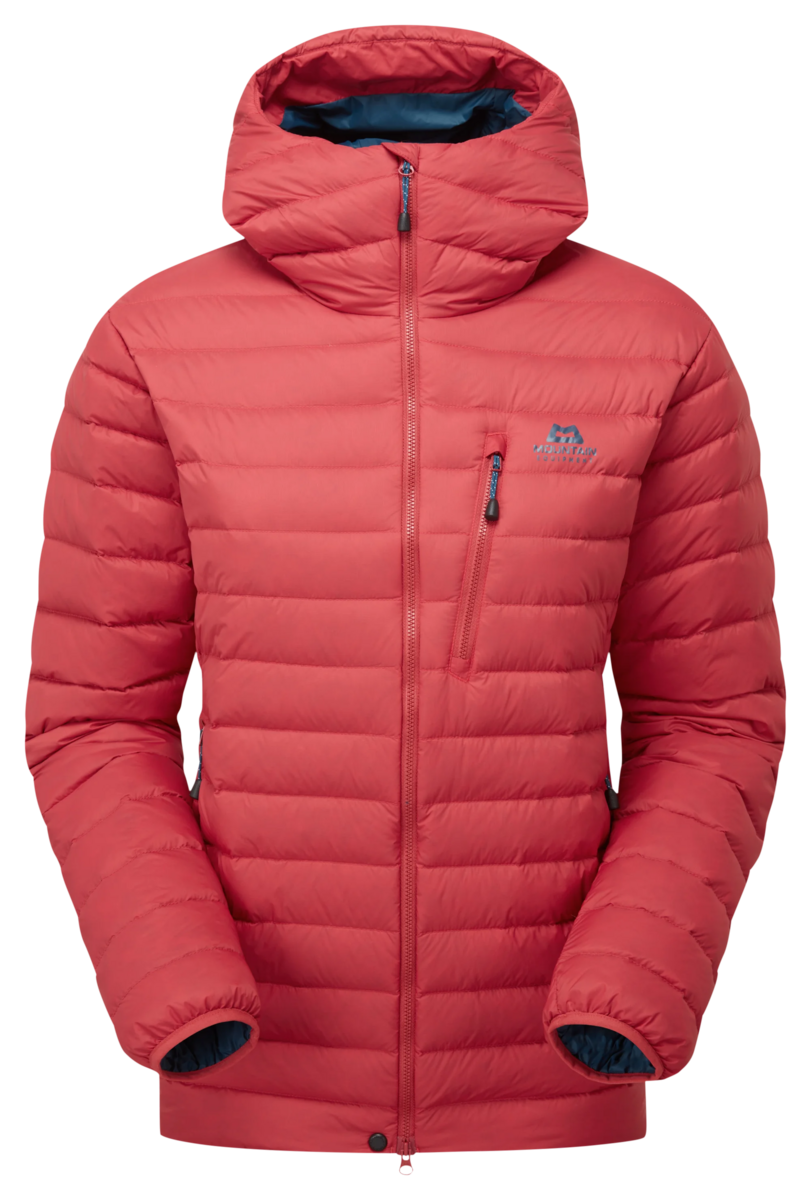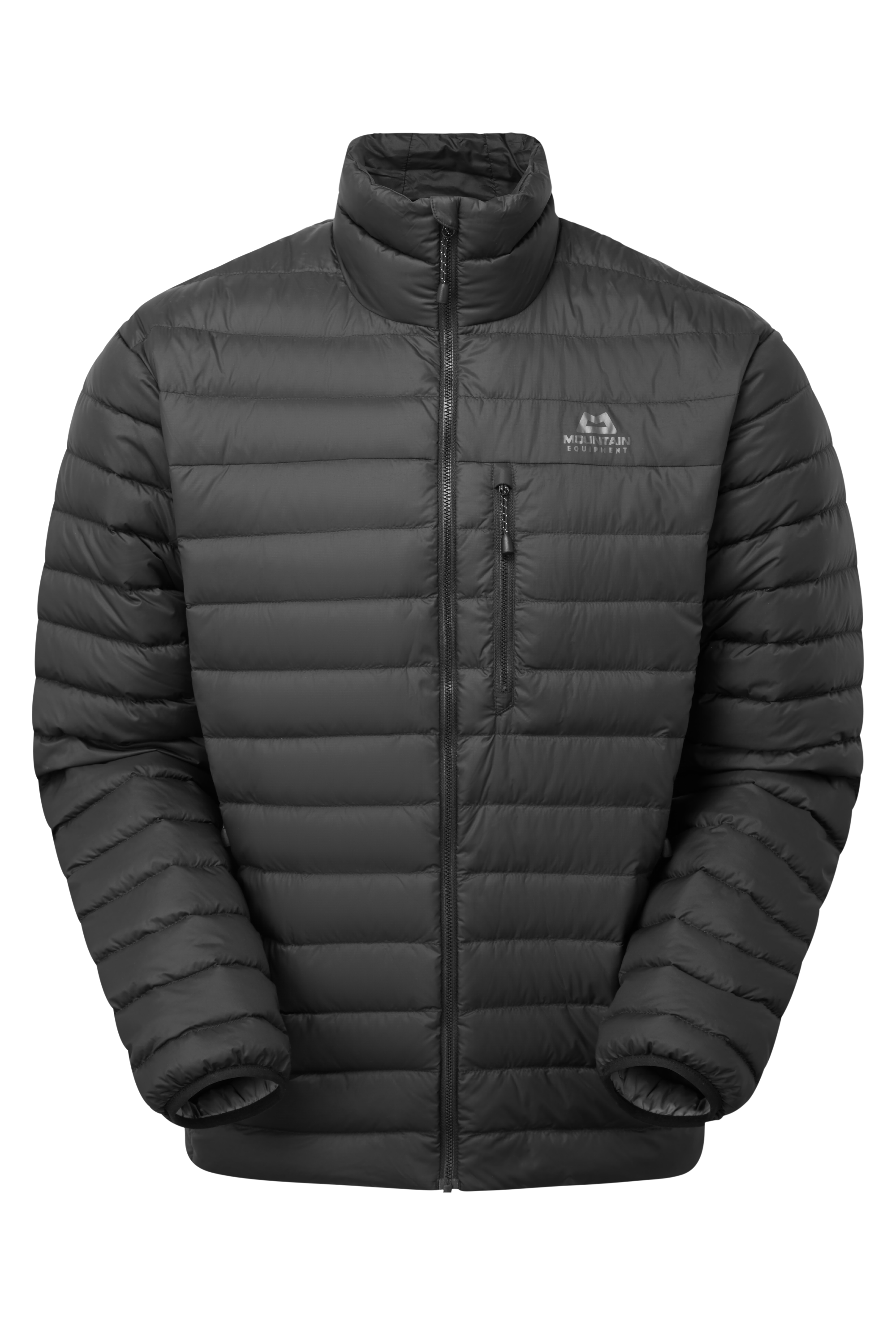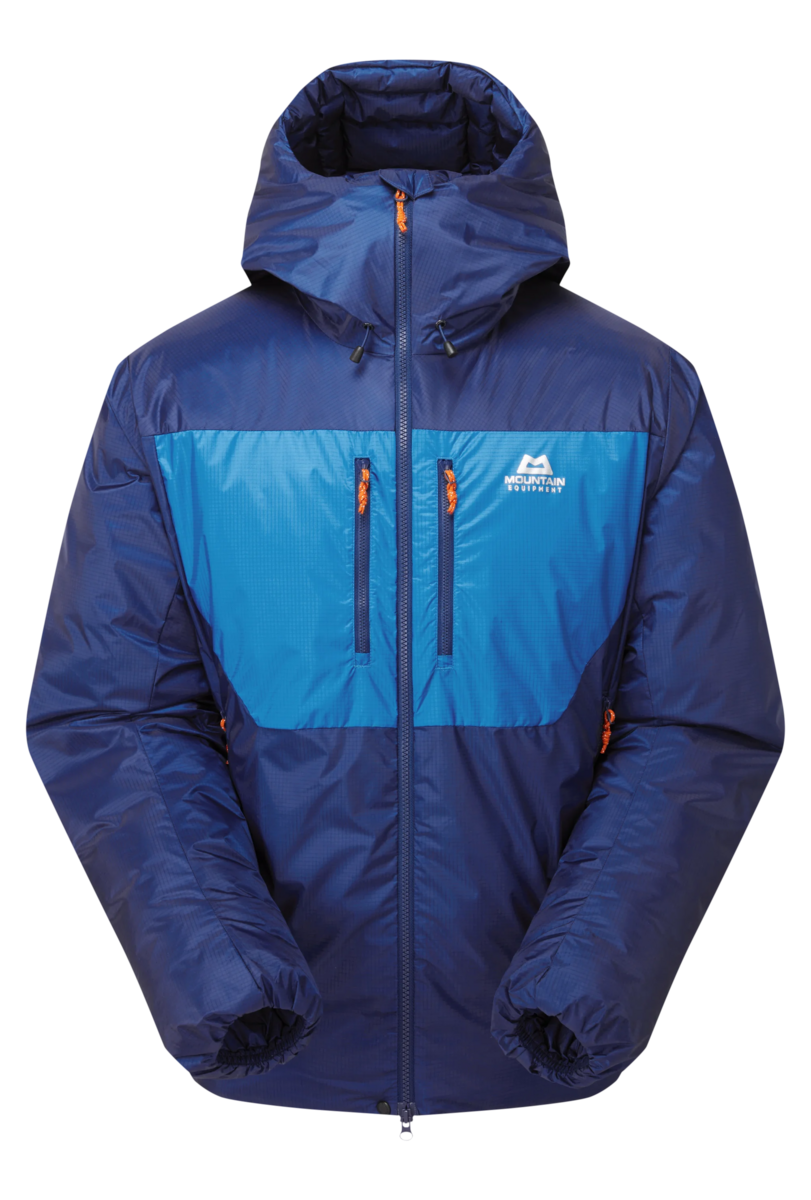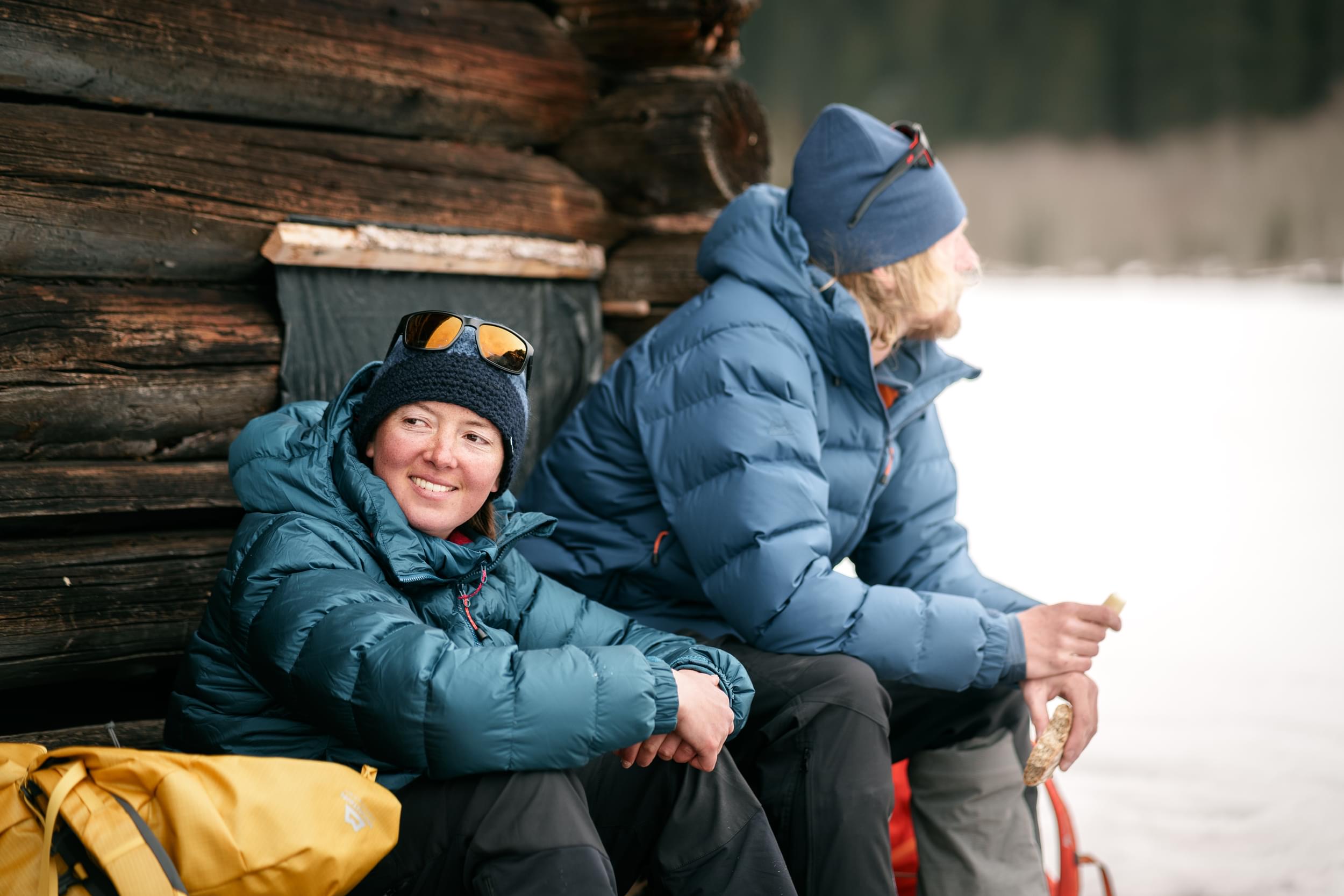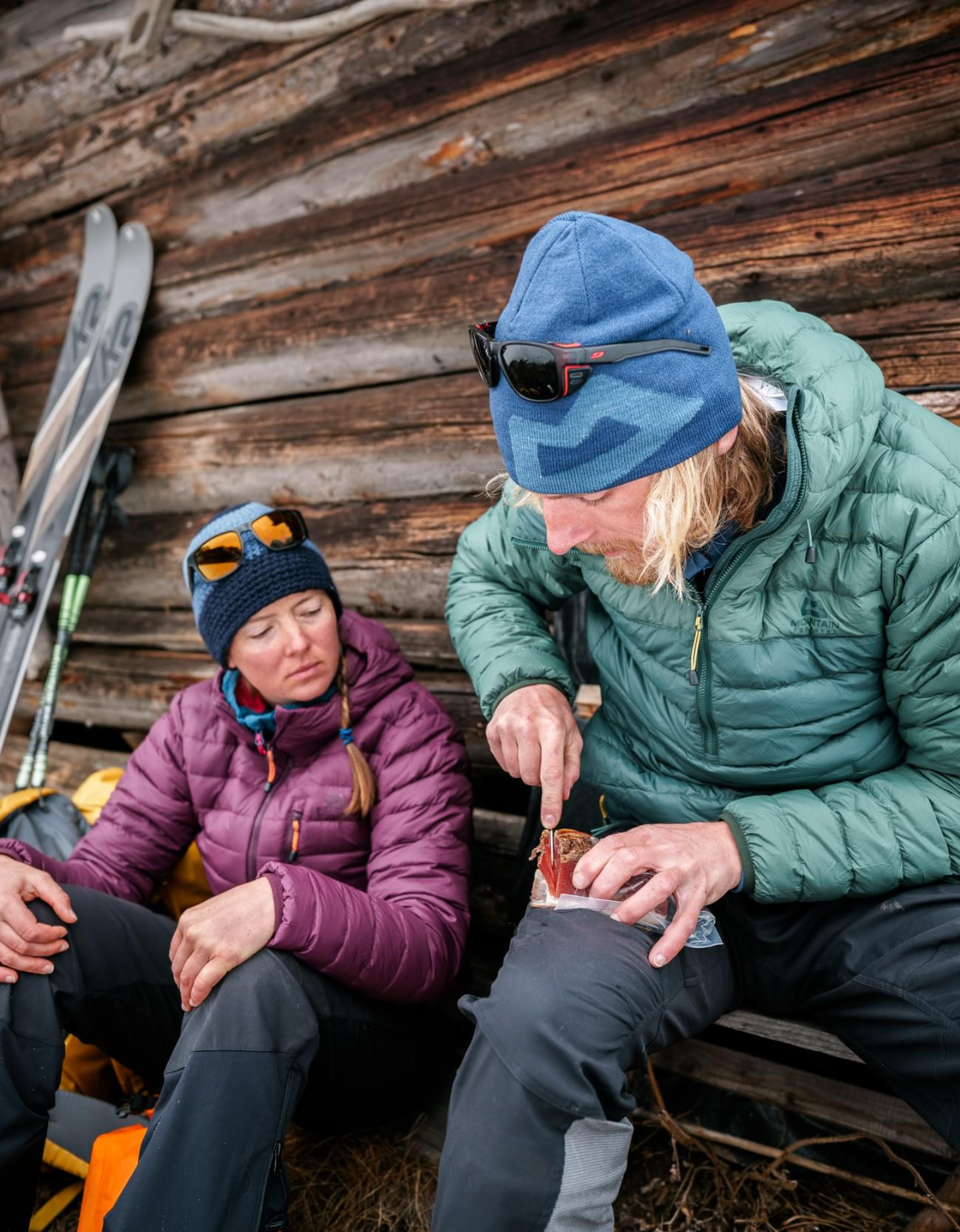Do I need a down jacket?
Very few people going out in the mountains regret buying a down jacket. They are comfortable, pack up small, last for ages, and are extremely warm for their weight. However, down is not very effective at insulating when it’s really wet, and it’s more difficult to care for than a synthetically insulated jacket. A down jacket is great for most uses, and excels in cold and dry conditions, but for damp places a synthetic jacket is often a better bet.
The advantages and disadvantages of down...
"Down is a fantastic insulating material. We use it in sleeping bags, mats, and clothing. It has major advantages over other types of insulation, but also some drawbacks."
Dr Matt Fuller, Product Engineer, Mountain Equipment.
How warm is a down jacket?
There’s loads of complicated methods for determining how warm a jacket will be, and few of them are useful. Skip the complexity and get to the point: the easiest way to tell how warm a jacket will be is to look at how thick it is: a thicker jacket will almost always be warmer than a thin one. Another method is to look at how much down is in the product (the fill weight), and a higher weight of down usually means a warmer jacket. Jackets with less than 150 grams of down in are relatively lightweight, jackets with approximately 200-250 grams of down offer medium warmth, and anything above 300 grams of down is a heavyweight and very warm down jacket. If the product doesn’t display how much down is in it then don’t buy it – that’s like buying a climbing rope without knowing how long it is.
What temperatures can I use down jackets in?
Temperature ratings on sleeping bags are confusing enough, and so we don’t give temperature ratings to our jackets because they would differ so much from person to person and because they would depend on use: if you are climbing steep ground quickly then a down jacket will feel much warmer than if you are stood still belaying or around camp for hours on end. If you are unsure of how warm a jacket to buy it is usually best to err slightly on the side of caution. For most people, carrying a bit of extra weight is better than being cold.
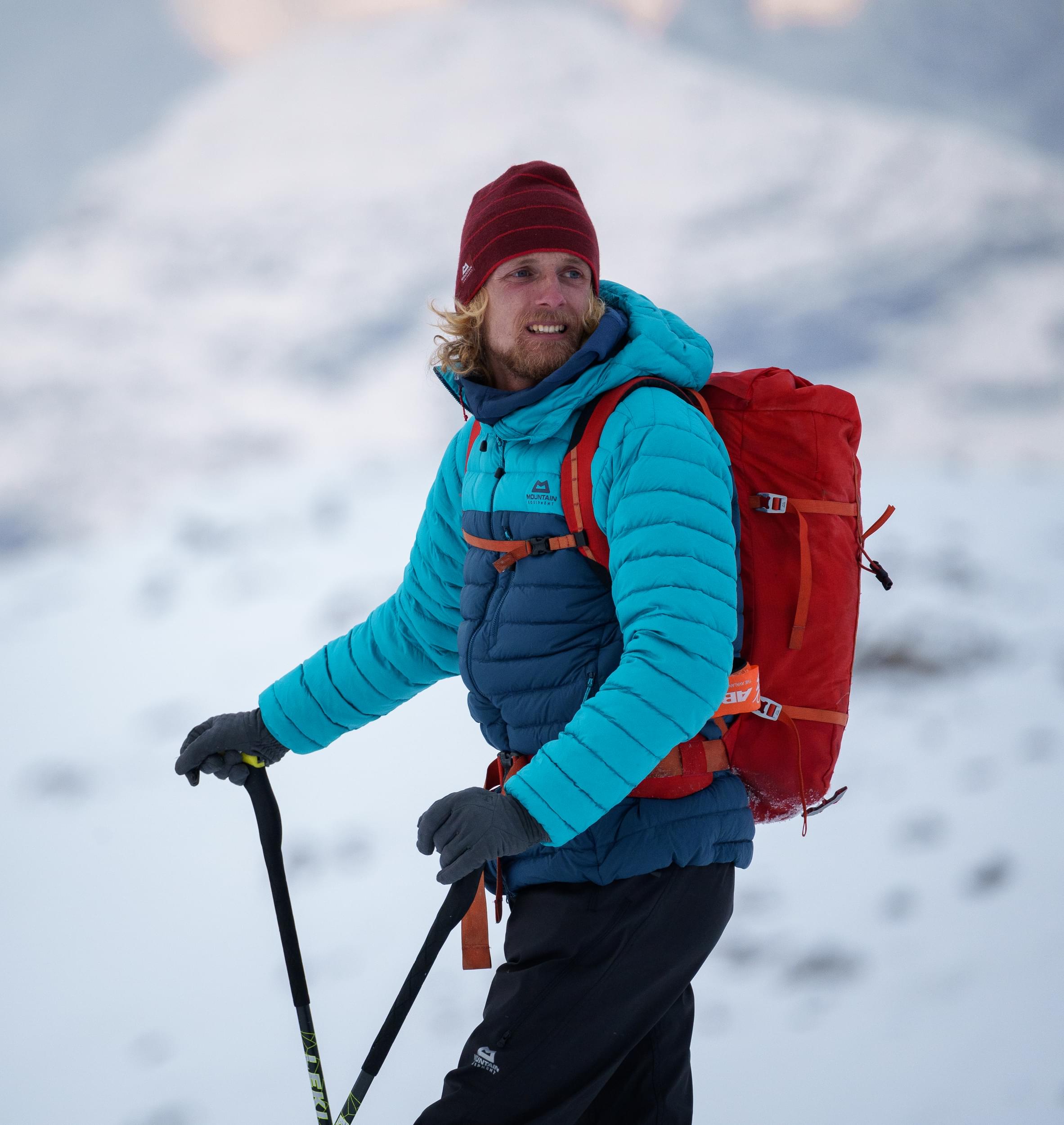
Construction and Fill
Fill Power
It’s easy to confuse fill power and fill weight, but don’t get drawn in. Fill weight is simply how many grams of down is in the product, while fill power refers to the quality of that down, with a greater number indicating greater quality. Roughly speaking, down above 700 fill power is very good down and down above 800 fill power is exceptional down. A down jacket with a small amount of high fill power down won’t be as warm as a heavyweight jacket with low fill power down, but it will be warmer for its weight. The fill power numbers that we state are minimum values, and through Down Codex® you can see the exact fill power of the down batch in your jacket.
Goose down or duck down
Traditionally, goose down has been held in higher regard than duck down, and it’s true that the best down is sourced from geese. However, modern down processing methods means that duck down has caught up, and which bird the down came from ultimately makes little difference to the performance of the end product. Fill power and the down/feather ratio (where more down indicates a better quality insulation) are better indicators of quality than whether the down is from a goose or a duck.

Grey Down and White Down
Depending on the source birds, down may be grey or white in colour. Grey down is more common than white down and is sometimes regarded as less desirable because it may sometimes be seen through translucent or lightly coloured fabrics. However, colour has no bearing on the down’s thermal performance or cleanliness, and in the vast majority of products an end user will not even be aware of it.
Most of the down that we buy is grey. However, in some products with lightweight and lightly-coloured shell or lining fabrics we pay an additional premium for white down. White down is permitted to contain a small percentage of grey down or ‘black spots’, as obtaining a completely pure white down naturally is not practicable. These black spots do not affect performance and the down functions identically whether it is white or dark. As down moves inside baffles the position or even appearance of these spots is only ever temporary. It is possible to buy pure white down where there are no black spots, but this down has undergone an additional processing stage where it is sorted by hand. As a result, its price is much higher and it is available only in limited quantities.
Our down undergoes testing before it leaves our down supplier, once it reaches the garment or sleeping bag factory, and some final production garments are tested to ensure that the down meets the specification that we require.
Down jacket construction
Constructing a down jacket is difficult, and we have been perfecting ours for decades. There are two main types of construction. Most down jackets are stitched-through, where the inside and the outside of the jacket are stitched together to make channels which the down insulation goes in. This is ideal for lightweight jackets but for very warm jackets it creates too many cold spots, and so a box-wall is used, where the inner and outer are kept separate, resulting in a warmer jacket. Box-wall jackets are heavier than stitch-through jackets, but if you want an extremely warm jacket then they tend to be the best option.
There are various other ways of making down jackets too. We developed our Firestorm construction over the course of three years of tests. Essentially a whole separate layer is put on top of an existing down jacket construction, which increases wind resistance, warmth, and water resistance, while adding very little weight or bulk. You can read more about our Firestorm construction here. Another construction unique to Mountain Equipment is our Dual Offset baffles. This has the low bulk and excellent comfort of a stitch-through jacket but without the seams that reduce wind resistance and warmth. For many uses, this provides a benefit over both box-wall and stitch-through constructions.
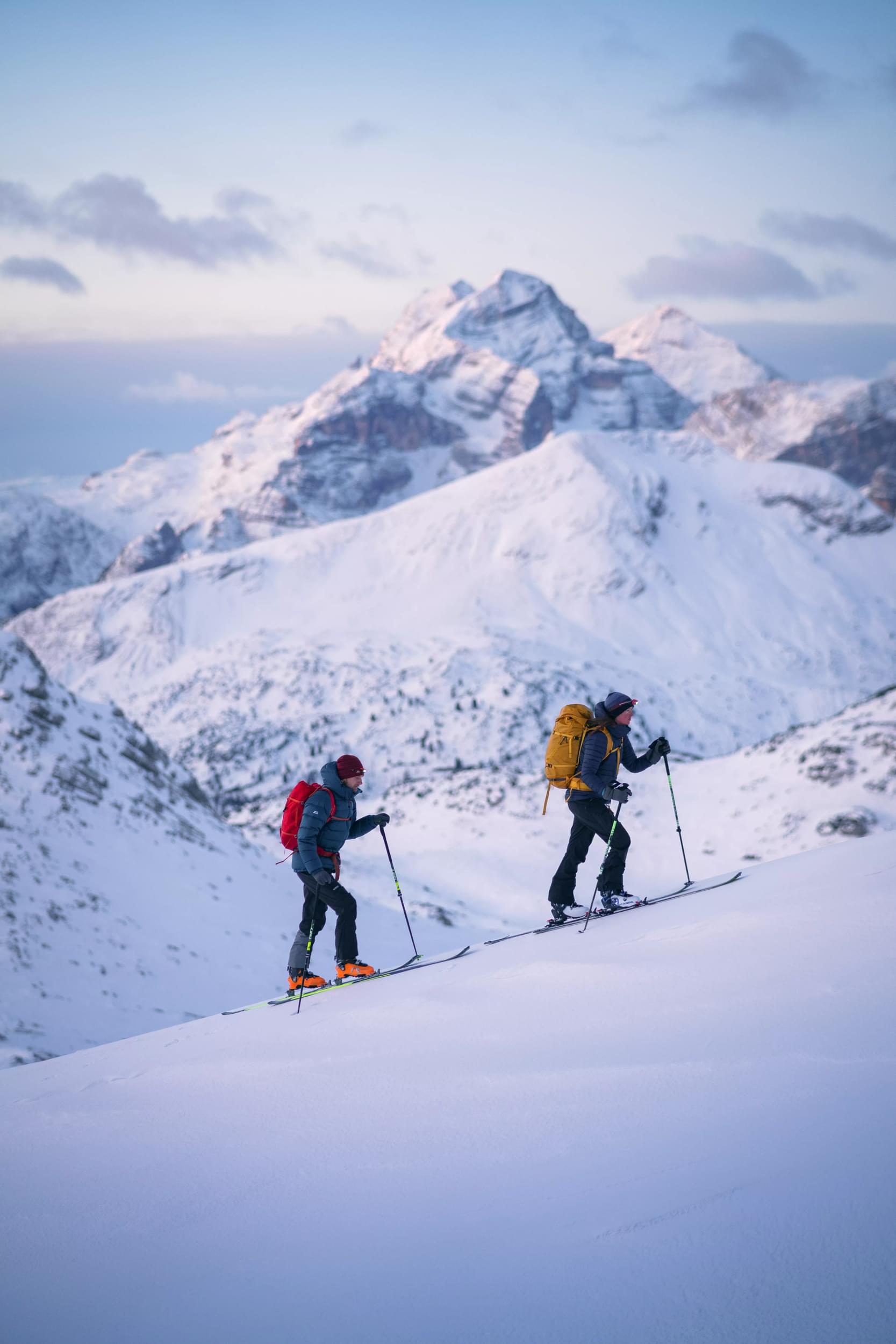
DOWN CODEX®
In 2009 Mountain Equipment became one of the first outdoor brands to introduce independent auditing of our down supply chain. Quietly introduced, without fanfare or press-releases, DOWN CODEX® set out to understand an industry and supply-chain that was largely ignored and certainly little understood.
All products contain a code that can be entered into our DOWN CODEX® website to trace the down that they contain. Not only can you identify the source of your down but the audit relating to that source and the down batch test results can also be viewed.
How waterproof is a down jacket?
Relatively few down jackets are fully waterproof, because even if the fabrics themselves are waterproof the seams can leak. The extra construction involved in taping the seams of a down jacket means that waterproof down jackets tend to be heavier than conventional ones, making them arguably less suited to difficult mountain conditions. However, they make fantastic day-to-day jackets for living in cold and wet climates, they double as good jackets for lift-skiing, and are very much at home in easier terrain. Our best-selling Triton is one such waterproof down jacket.
Water resistant down
Most of our down jackets don’t use water resistant down, and we instead prefer to use water resistant fabrics to stave off dampness in the insulation.
Is a down jacket a good layer to wear under a waterproof jacket?
In most conditions, no. A down jacket can be used as a midlayer, but they tend to be too warm for most people. Even our very lightest down jackets are warmer than almost any fleece, and so unless it is exceptionally cold then wearing them under a waterproof jacket while moving will make you overheat. If you aren’t moving far, then a lightweight down jacket is a great warm layer to wear under a waterproof, for example at a damp overnight camp. Heavy down jackets are almost always too warm and lofty to be worn underneath a waterproof jacket and are usually better off worn over the top of waterproofs.
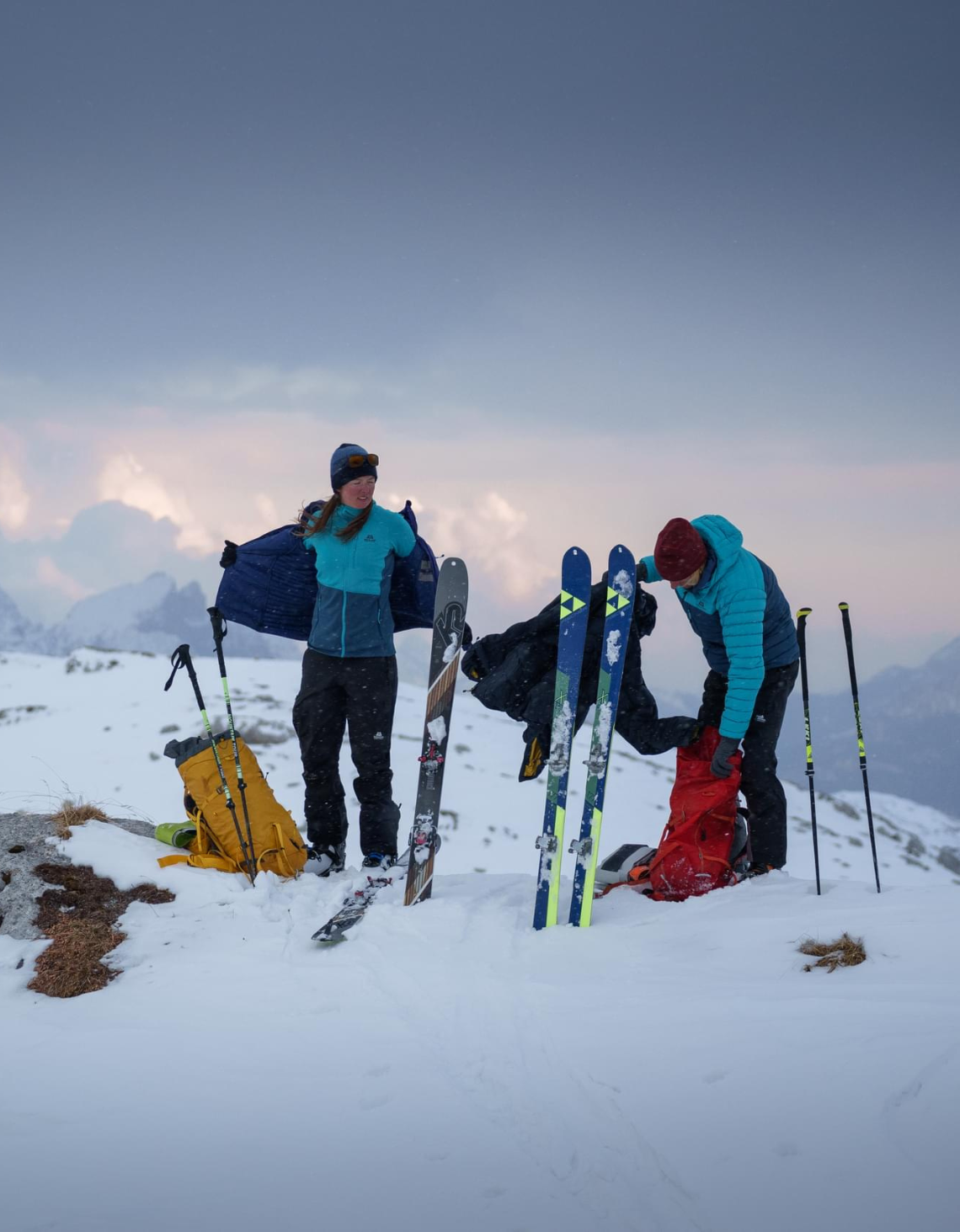
Damp environments and Scottish winter conditions
Down jackets aren’t usually the best choice for use in damp environments and if you’re expecting lots of rain then a down jacket is among the worst things to wear. In typical Scottish winter conditions a down jacket can last a fair while before being soaked, but spindrift, damp layers and precipitation can eventually waterlog them, and a synthetic jacket is usually a better bet.
On bluebird days a down jacket can work out well, however, and they provide warmth, pack-size and weight benefits over synthetic jackets. Our Firestorm jackets offer significantly more weather protection than most down jackets and have been designed to cope with more serious mountain weather than many down jackets are.
Which down jacket should I chose for...?
-
Alpine Climbing
Most of our jackets are ideal for alpine climbing, but our highest performance products are our Xeros, Kryos and Exo jackets. Our Vega, Sigma and K7 products have all been used on peaks well over 6000 metres, on thousands of alpine summits, and have stood the test of time. Our Gasherbrum jacket remains probably the warmest lightweight jacket for alpine climbing available and has been used on oxygen-free ascents of peaks over 8000 metres.
-
Winters in a cold and drizzly city
We’re based in the north of England so we know cold and wet conditions pretty well. For these conditions, our waterproof Triton down jacket is perfect. Our Lightline styles are perennial winter favourites too; while they have water resistant Drilite® fabrics which will keep out light rain they are not waterproof and so aren’t best used in pouring rain. Our Altai Parka is a fantastic women’s style for this sort of use too.
-
Backpacking or thru-hiking
Down jackets are ideal for this, being very warm for their weight and packing away small. For temperatures above freezing a lightweight down jacket such as our Frostline is all that most people will need, and its relatively thin profile means that if it rains it can be worn under a waterproof jacket while around camp. If it is due to be below freezing then you should consider taking a warmer jacket, or using insulated legwear alongside your lightweight down jacket.
Sustainability Considerations
Is your down ethically sourced?
In short, it’s as ethically sourced as it can be. We have been a leader in changing the way that the entire industry has approached down sourcing, and we have written extensively on this issue. For further information please refer to our Down Codex website, which is exclusively about down sourcing, and the blog articles here.
How long do down jackets last?
Down jackets should last a long time. For most people their wearing is only seasonal, which prolongs their lifespan, and the insulation itself should last most users for a decade or more. Outer fabrics can tear, however, and these are usually repaired without too much difficulty. Take pride in a worn jacket and do whatever you can to prolong its life.
How do I look after a down jacket?
Down is regarded as difficult to care for but it’s actually pretty easy. The one key thing to avoid with down is long-term storage when it’s damp: that will ruin the jacket. A few days is fine, but don’t let that few days turn into a month, particularly when the jacket is compressed into a stuff sack. For further information on down jacket care please see our care pages.
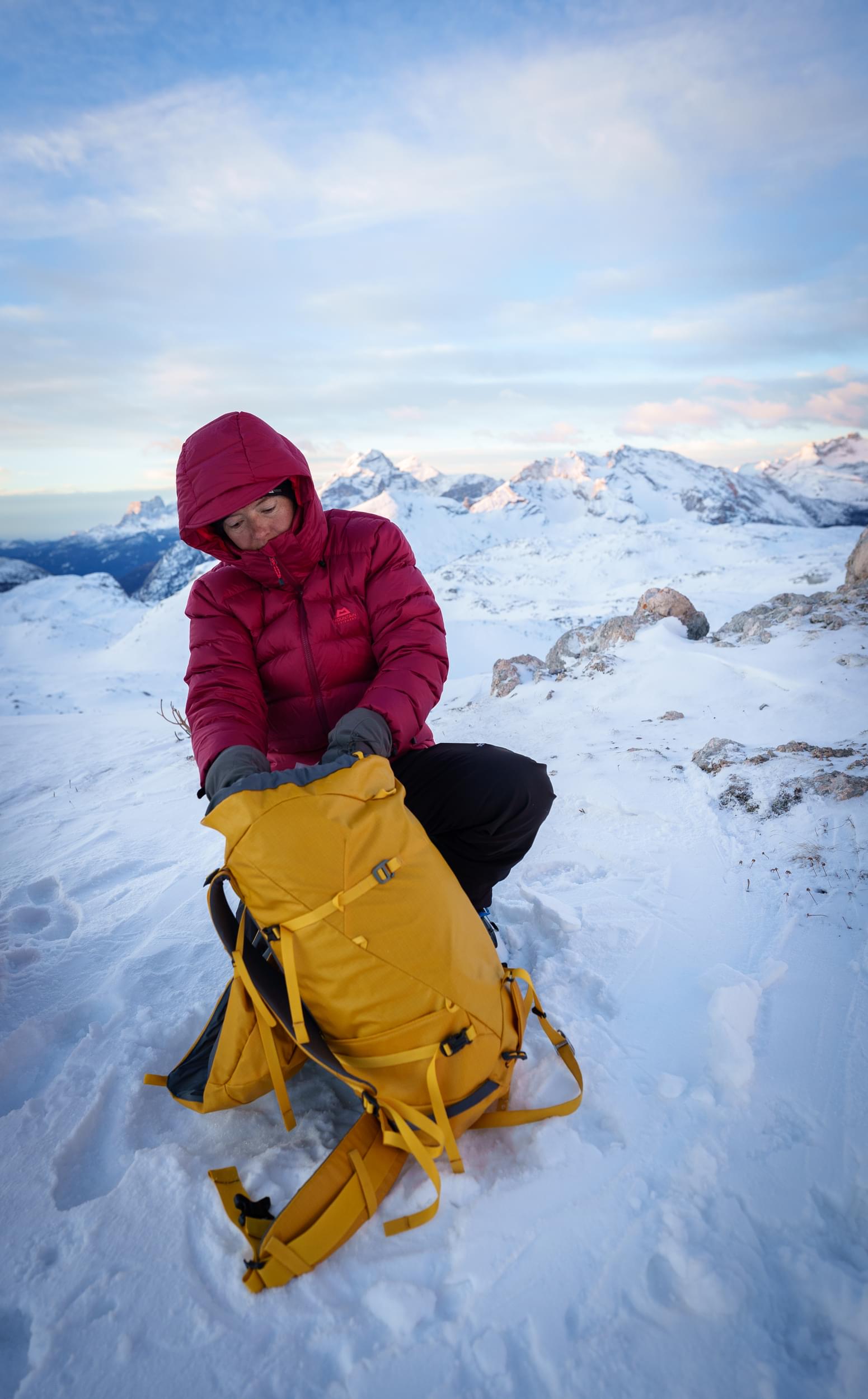
Turning Waste into Warmth
Down Cycle is part of our commitment to do business in a more sustainable way. It began in 2017 with the introduction of 100% post-consumer recycled down into our Earthrise range of clothing but also includes a much more ambitious plan to create a functioning closed loop recycling system, ensuring down clothing and sleeping bags which are either unwanted or at the end of their life do not simply get thrown away.


